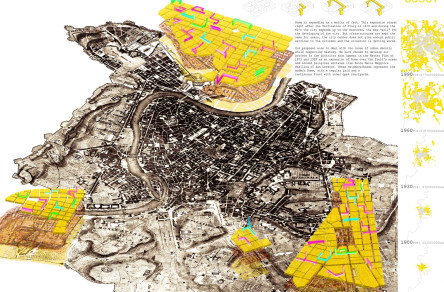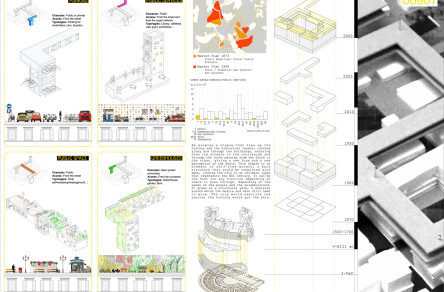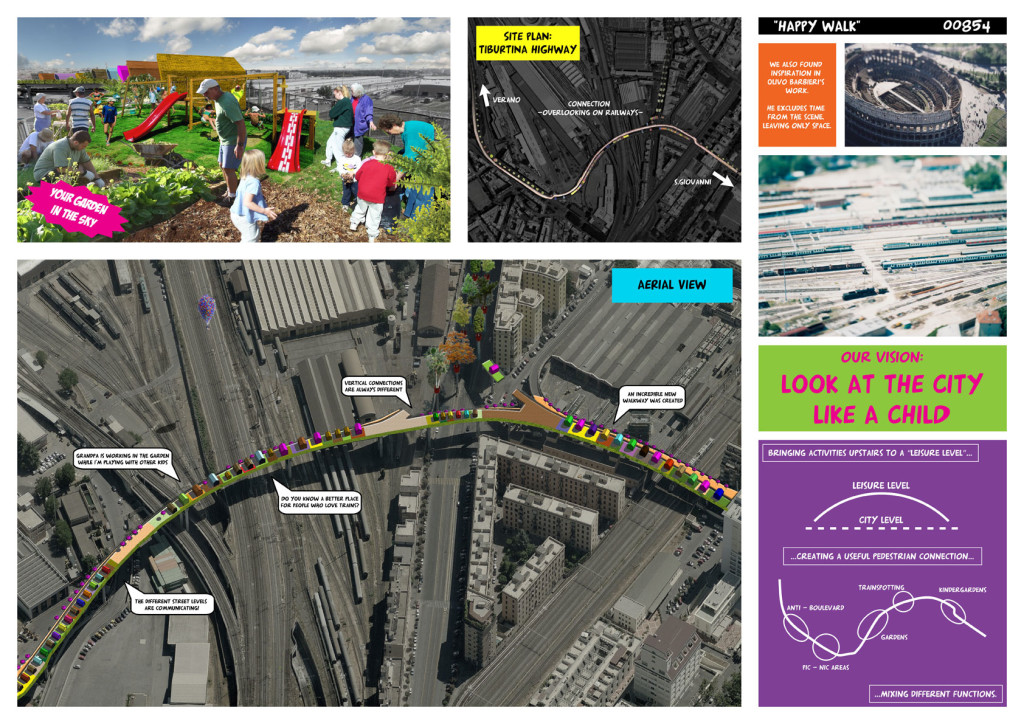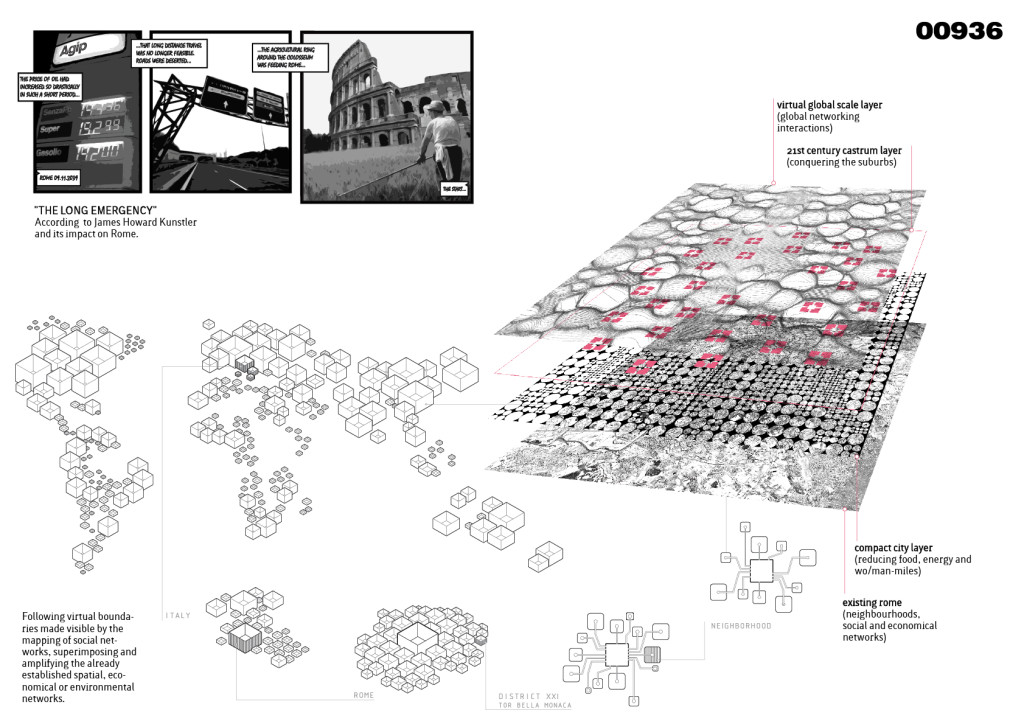Info:
Title: Rome - Code: 00907Contest: Rome / 2010
By: E. Olivares Zapiain / A. Niso Galan / C. Mampaso Cerrillos
Views: 2950 Likes: 1
Votes:
JUERGEN MAYER H. 0 FRANCESCO LIPARI4 FELIPE ESCUDERO2 FRANCESCO GATTI 7 MICHAEL CATON 23.0
Rome


Rome is a stratigraphic sample of our history, our culture, our evolution of thoughts and forms, a sample of beauty, of proportion and rhythm. Romehas been growing over itself in a decisive and characteristic example of our architecture and urban design throughout centuries. It is the origin of our cities, the inspiration for our art and architecture.
Rome is expanding as a matter of fact. This expansion stared right after the Unification of Italy in 1870 and during the 60’s the city expands up to the Raccordo, the new “wall” for the developing of the city. But infrastructures are kept the same for years, the city center does not give enough public services to the citizens and the situation is getting worse. To which direction it would explode?
As architects, planners, as dreamers and as citizens, which should be our historical contribution to this city? In the same way medieval houses of the Teatro Marcello seem to be born next to the Roman ruins in symbiosis, in the same way that during the 30’s density had been increased raising the upper floor in building of XIX-XX neighbourhoods, and in the same way that the Vesta’s temple coexists with the Roman church and the chaos of the city.
What is the actual lacks Rome? The cohesion.
Our proposal aims to deal with the issue of urban density while respecting History. We have chosen to develop our project in the districts that appear in the Master Plan of 1873 and 1909 as an expansion of Rome over the field’s areas and around religious enclaves like Santa Maria Maggiore Basilica of San Lorenzo. These neighbourhoods represent the modern Rome, with a regular grid and a continuous front with inner open courtyards.
We propose a staple that ties up the history and the historical layers; running along and through the buildings, entering from the streets to the courtyards and through the roofs passing from one block to the other, giving a new form and a new perception of the whole. This staple is an element of self-free-growth, a bare structure that would be completed with ages, linking the city in an ultimate layer that represents the XXI century. It can be the host for any function depending on where it goes through, depending on the needs of the people and the neighbourhood. It grows as a structural worm, a skeleton around which the muscle and skin still need to grow. The city would exercise the muscle; the history would put the skin.
Throughout this staple we highlighted four main uses:
Greenhouses: Due to invasion of the courtyards with temporary structure common spaces within the buildings are getting lost. Urban gardens are an effective mode of a self-sustainable economy. At the same time can be used to catch energy from the sun used for the electricity of the houses and they contribute to clean the air. A common activity would bring people together rising the sense of community which we are loosing in the big cities.
Public Services: As a point of escape from the chaos of the city we propose places of rest and relaxation more linked to the building and its users than to the tourist or visitor. These spaces would be small libraries, media libraries, reading rooms, cafes, scenarios for concerts and new view points of the city.
Public Space: We double the ground floor to create a tour through the terraces of buildings. This helps to awaken the minds of the people giving them a new way of perceiving the city and encourage them to use the new services along the staple. Just a new perspective can change the whole vision of a city.
Parking: Rome’s great problem: Where to leave the car. Currently in the historical centres parking with hydraulic lifting are resulting very effective. Thus we liberate the street from cars and allow people to move more freely.
Rome is lively and vibrant, which opens our eyes to a new form of urbanism as it did in antiquity, by layers.Rome is a consequence of layers. Being coherent to this fact we have the duty to understand this city as it and we have to be able to contribute to his history leaving the footprint of our time.






